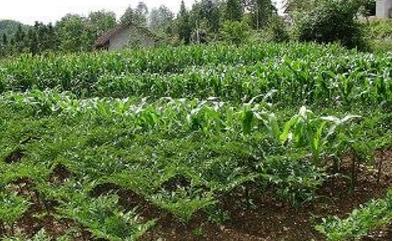Food Processing Equipment and Konjac
As October approaches, konjac also ushered in the harvest season. The suitable planting areas of konjac in my country are mainly distributed in the tropical and subtropical humid monsoon climate regions such as the Southeast Mountains, the Yunnan-Guizhou Plateau, and the mountains around the Sichuan Basin.
Konjac has been cultivated and eaten in my country for a long time. The processed products of konjac are not limited to the konjac tofu that people often eat in the past. Konjac has been processed into various snacks and snacks, which are deeply loved by consumers. At the same time, konjac has the characteristics of low calorie, low protein and high dietary fiber, which also makes it a popular choice for people who love beauty and lose weight, and it is an ideal diet food.

However, this ideal diet food cannot be eaten casually. The whole plant of konjac is poisonous, and the stem tuber for our consumption is even more poisonous. It must be detoxified by milling, cooking, rinsing and other processes. Improper handling may also lead to food safety problems. Gloves should also be worn during processing to prevent the konjac juice from getting on your hands.
As the economic value of konjac has been gradually excavated, konjac production areas have begun to vigorously promote konjac cultivation, and konjac cultivation and processing have long been linked to poverty alleviation and prosperity. As the processing of agricultural products gradually develops in the direction of mechanization, scale, automation and intelligence, konjac has also gotten rid of the traditional small workshop processing mode. The use of various processing equipment such as peeling, slicing, drying, grinding, cooking, etc., makes konjac processing more effective with less effort, and the efficiency is greatly improved. The konjac products produced are safer and more reliable, and the quality is also guaranteed.
The shelf life of konjac is short. In order to prolong the shelf life of konjac, processing plants generally dry konjac slices for later use. Konjac dried flakes are not only convenient for transportation, but also provide convenience for subsequent deep processing. It is understood that since domestic konjac raw materials cannot keep up, konjac processing enterprises still need to import konjac dried flakes from Indonesia.
The dried konjac flakes can be turned into konjac powder commonly used in deep processing. Generally speaking, konjac flour processing mainly has two processes: dry method and wet method. Among them, dry method is obtained by pulverizing, separating, grinding, sieving, classifying and mixing. With the continuous improvement of the performance of pulverizing equipment in recent years, it also makes The quality of konjac flour has been improved.
It is understood that Hubei Province regards konjac as one of the key agricultural industries that it strives to build. Hubei's konjac products are exported overseas, and the export value has reached 140 million yuan. As a leading enterprise in the domestic konjac industry, Hubei Accord Konjac Biotechnology Co., Ltd. focuses on the deep processing of konjac and the research and development, production and sales of konjac-related products. In addition to developing various konjac snacks, the company also uses konjac in the field of beauty masks, producing nearly 300 konjac products.
Konjac has a good market prospect. Compared with other agricultural products, the price of konjac can be said to be in a relatively stable growth period. The application of various processing equipment and processing technology can not only increase the added value of konjac products, but also promote the income of farmers. With the further integration of the upstream, midstream and downstream industrial chains, it will further promote the healthy development of the konjac industry.




